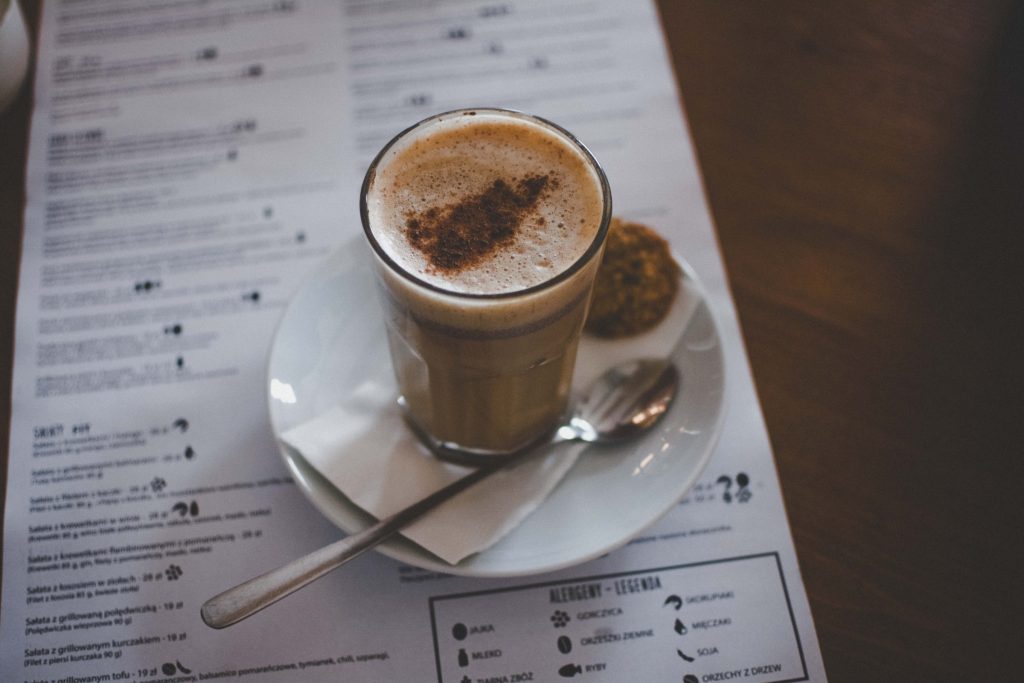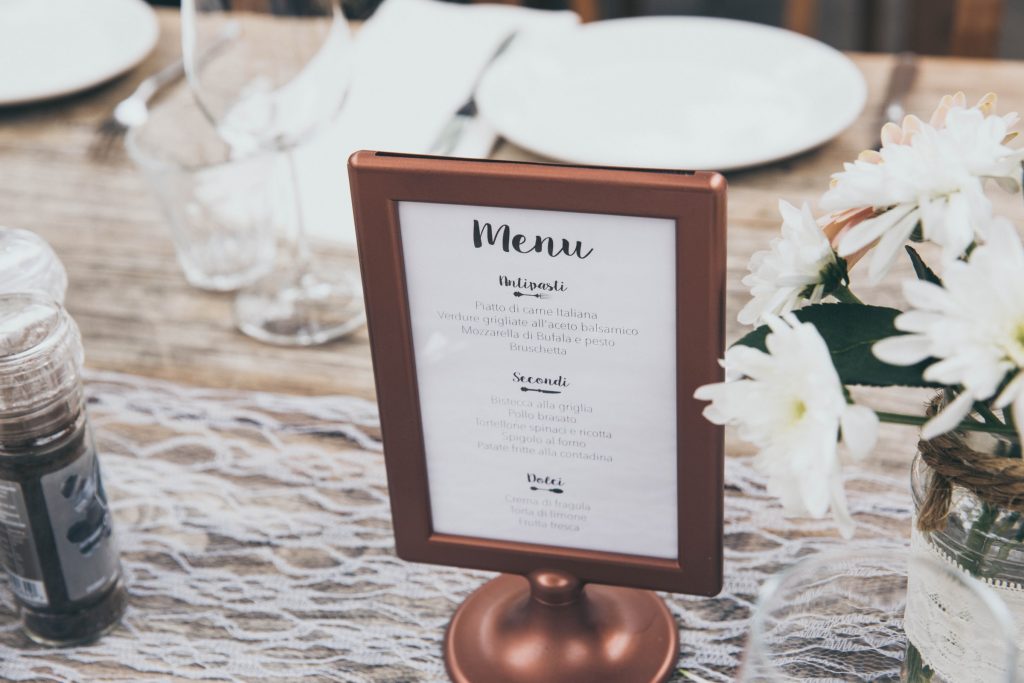So, you want to open a restaurant, or you already have one. That’s great. Have you figured out your menu? The answer is probably no if you’re looking at this article, but rest assured, by the end of it you’ll have a better idea of how you can show up competitors with our menu pricing strategies.
Optimizing your restaurant’s menu may seem like a steep task, and it can be without taking the proper steps. There are so many pricing strategies that it can be overwhelming. Below we’ve compiled and summarized all you need to know about restaurant menu pricing strategies.

Pricing Out Dishes
Assuming you have an idea of what your menu will have on it, or what may already be on it, the first step will be to price out your dishes. The restaurant industry is known for having thin margins, so knowing the food cost percentage is a must. In fact, two of the main menu pricing strategies include…
The Food Cost Formula and How To Use It
This may sound like some technical equation that takes a lot of thought, but it’s simpler than it sounds. First, you’ll these two:
- The Menu
- And, the Sales Report (which should be accurately recorded on your POS system)
With that you can then use the food cost formula which is:
(Initial Inventory + Purchases – Ending Inventory) ÷ Food Sales = Food Cost Percentage
Using this formula will simplify the process of menu engineering. It’ll help you find the cost percentage of each menu item, all the way down to the ingredients. You can also use this formula to find the most popular dishes on your menu and least popular, thus allowing you to order more or fewer ingredients based on how often the dish is ordered. This leads us to the second main menu pricing strategy.
Always Use Proper Portions
Repeat it with us. Always use proper portions. This may seem like a basic principle, but you’d be surprised at how many restaurants fail because they don’t follow it. Using proper portions is an issue in the kitchen.
If you or your chefs aren’t using the proper portions, then you might as well throw the menu out and forget all the hard work you did to properly price it. To ensure proper portions are being used, train all kitchen staff to measure and weigh all ingredients
Be Flexible With Ever-Changing Market Prices
Another important strategy to remember is being flexible. Food costs never stay the same, and your menu should fluctuate with the cost. Whether you order ingredients from a local farm or from afar, your sources for ingredients could change due to many things. All of the following can result in food cost fluctuations:
- Poor Crop Yields
- High Crop Yields
- Natural Disasters (floods, droughts, pest, etc)
- Theft
It’s debated when there is an overproduction if prices should be lowered, and that comes down to you. Lowering your price could undercut a competitor, but it could also set a bad precedent if people always expect your prices to be low. On the other hand, you could lose business if a competitor lowers their price, undercutting you. The best thing you can do is be adaptable.
If the price of an ingredient goes up, the price on your menu will go up. These fluctuations are usually on a month-to-month basis, so check it as such.
The Initial Menu Appeal
Menu design is another key for restaurant menu pricing strategies. The look, feel, and culture of your restaurant should shine through from the employees to the look of the place, all the way on to your menu. If you sell Mexican food, then your menu should reflect that in design and the font.

Demographic and Design
Before you even begin designing your menu, you have to find your target demographic. Ask yourself, “who are my intended guests?” Do you want to sell high-class, five-star restaurant food, or are you more interested in a casual street taco crowd?
While you’re on that train of thought, think about the type of food you want to sell. Some owners run into the issue of wanting to cook everything from sushi pizza to deep-fried Oreos. Can it be successful? Maybe. But, has it been? No. So, pick a niche and expand in it. Being a jack of all trades but master of none is not an appealing aspect to a customer.
Once you’ve answered those questions, you’ll have a good grasp of what your menu will look like, and if you still don’t, then look at competitors’ menus for a good idea.
Be Specific About Orders
Nowadays, people are more worried about ingredients than ever before. Just take a look at the shelf in a local grocery store. You’ll see many alternatives like gluten-free, dairy-free, vegan, grass-fed, and the list goes on.
People care about what’s in their food, so allow them to know by being specific on the menu. This will also give the customer the option of customizing their meal. If they don’t want pickles or onions on their burger, then give them a chance to take it off before their food is served.
This doesn’t mean your menu has to be inclusive. It just means that customers should have a good idea about whether or not they want to eat at your restaurant before they sit down.
The Rule of Three
Give the customers three versions of a dish. For example, the first dish can be the most simplified version, like a cheese hamburger. The second could be the same burger with lettuce, onions, and bacon. The third option will be the highest tier with the best quality. Maybe the meat in the third tier will be local and fresh.
Giving the customer three options gives them things to compare. Usually, they’ll pick the second option because they’ll feel like they’re getting a deal. Hunting for bargains can be part of the fun for customers, so without the other two options to compare, the second option wouldn’t seem like such a deal. You may also get customers that want to spend extra on the higher tier because they want to feel superior.
Removing The Dollar Sign Has Surprising Effects
Everyone has been to a restaurant once and seen that there was no dollar sign present anywhere on the menu. Instead, there was simply a number for the price. Does it have any effects?
It does. According to a Cornell University study, “Diners in an “upscale casual” restaurant spent an average of $5.55 — about 8 percent — more when the menu did not use dollar signs…” The idea is that removing the price tag will cause diners to forget the costs and spend more.
TLDR: What Are Two Main Menu Pricing Strategies Commonly Used In The Restaurant Business?
For those in a hurry, this section is just for you. The two menu pricing strategies are using the food cost formula and using proper portions.
The food cost formula, which you can see in-depth above, is an equation everyone in the restaurant business should know and use. By using the formula you can find out the cost of a dish on your menu down to the ingredients. It’s also useful to find high and low-performing dishes, so you can expand or shrink your menu.
Portioning properly is the next important strategy because without it you’ll lose track of actual profits and cost. Be sure to train staff to measure and weigh ingredients.
Menu Pricing Strategies In a Nutshell
No matter how much you read or research, you won’t find a guide that will specifically work for your restaurant. The strategies listed here are important and should be used by all restaurants. Remember these (ordered most important to least):
- The Food Cost Formula and How To Use It
- Always Use Proper Portions
- Be Flexible With Ever-Changing Market Prices
Your restaurant’s success hinges on pricing the menu right and being flexible with market prices. With the insight we’ve given you on pricing strategies, go out there and be successful.
Looking for a better way to manage costs? Here’s how EagleOwl solves all your cost management related problems for a seamless back-of-house experience. Click below to get started with your free demo today!
